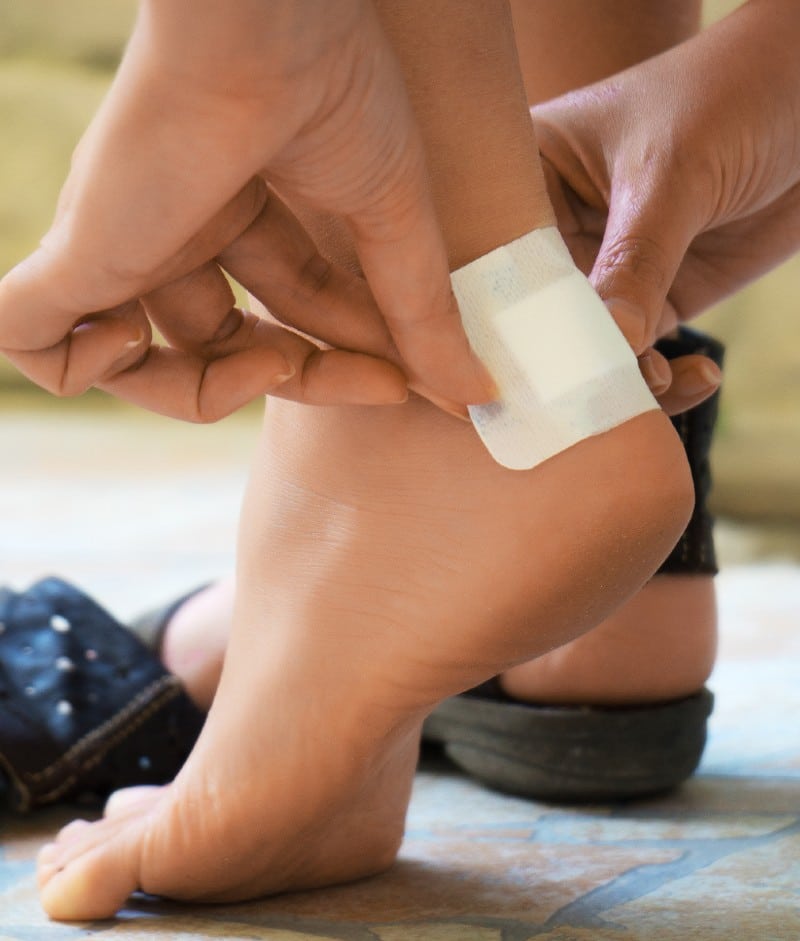Blisters: Unforgiving Friction
If you have ever watched a survival show or been in class or camp that taught you the tricks of the outdoors, you may have knowledge of how to start a fire with two sticks. By rubbing the sticks together with a little kindling or fire starter, the repeated friction can create a spark or flame. It is just the nature of how things work. When your foot is exposed to excessive friction, it is common for a blister to result. Blisters can be sneaky and develop without you realizing it. A night out dancing, along a neighborhood walk, an intense sports practice, or trying to break in a new pair of shoes can leave you with a painful bubble on your skin.
What causes these painful sores?
The most common cause of blisters is friction—when your skin repeatedly rubs against your sock or shoe. It usually starts out as a hot spot, and when exposed to further friction, the fluid-filled sac forms. When the outer layers of the skin are damaged, the area fills with fluid as a natural way to protect the underlying, more sensitive tissues. Even a small blister can be painful and should be treated properly. If it gets worse or the skin breaks, your body is open to infection. Conditions that compromise your immune system or delay healing, such as diabetes, make it even more imperative to treat this injury with care.
In addition to friction, there are several other causes of blisters. First, a burn from touching a hot surface or being in the sun too long can damage your skin and cause a blister. The tops of your feet can burn while tanning, and the soles of your feet by walking on hot sand or pavement. Second, blisters may appear through contact dermatitis, which is when your skin reacts to certain irritants such as laundry detergent or poison ivy. An itchy, painful blister can develop due to an underlying infectious disease, or from a rash that develops as a reaction to a medication or lotion, you may have used on your feet.
Protection and Treatment
With a minor blister, it is generally safe to allow it to heal on its own. Apply a topical antibiotic cream and cover it with a bandage. Over time the fluid will simply get reabsorbed into the skin and the damaged area will heal. Most of the time, it is not advised that you try and puncture the blister. The fluid and top layer of skin are there as a form of protection against further injury and infection.
If the sore becomes open on its own, it is vulnerable to infection and needs medical attention. Gently clean the area, apply some antibiotic cream, and cover it with a bandage. If you have a condition such as diabetes, immediately seek medical treatment if you have an open sore. It does not take long for an untreated sore to turn into a non-healing ulcer, and you could face serious complications. If you are aware of any footwear that may have caused the blister, be sure to avoid wearing them again until the skin heals.
If you have a larger blister that is very painful or you notice that an infection may have already started to develop, the most important thing you can do is put the care of your feet into your hands. We can start the proper treatment so that you can resume your normal activities quickly and without pain. It may also be that faulty foot mechanics and/or poorly fitting footwear are the cause of the problem. We can identify and help treat these causes so you don’t have future problems with blisters.
Contact Richardson Podiatry Associates if you have any concerns about your feet or need medical treatment for a painful blister. Call our Richardson, TX office at (972) 690-5374 to make an appointment with Dr. David Haddad.

